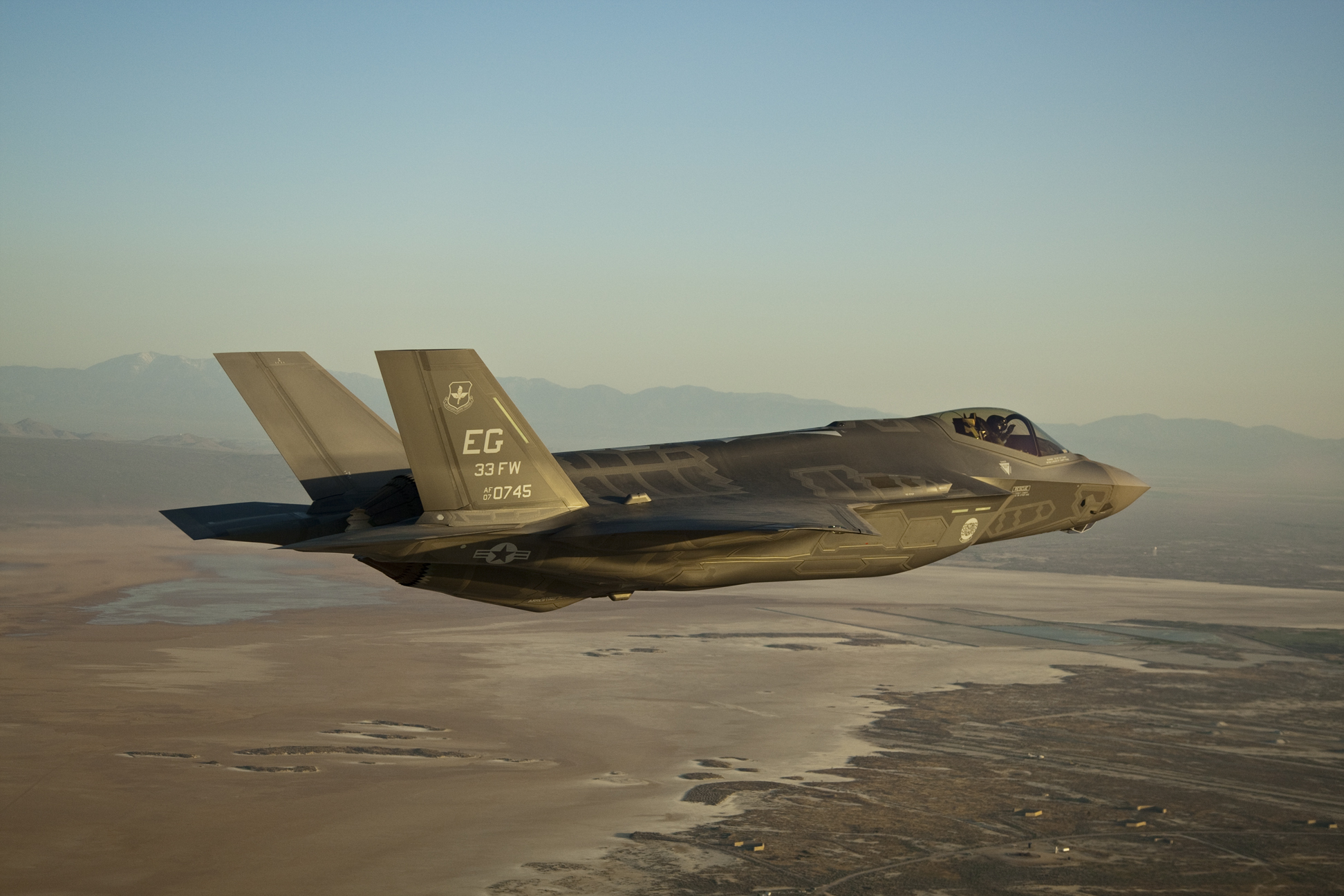 |
| JSF/JCA Winner: F-35 Lightning II |
The objective of the F-35 is to provide a set of 3 different, yet similar, aircraft capable of multi-role combat. To reduce production, research and maintenance costs each of the 3 airframes required 70-90% similar airframes.
The F-35 is a joint program between the US (Lockheed Martin & Northrop Grumman) and UK (BAE Systems). It is the largest defence programme with initial customers having a requirement of around 3,000 aircraft.
The 3 "variants" of the F35:
- F-35A - To be used by the USAF (United States Air Force). Designed as a CTOL (Conventional Take Off & Landing) providing mainly air-to-air (with the possibility for air-to-ground) combat.
- F-35B - To be used by the USMC (United States Marine Core). This variant is STOVL (Short Take Off & Vertical Landing).
- F-35C - To be used by the US Navy and RN (Royal Navy). This variant is CV (Carrier Variant) and uses catapults to launch the aircraft, and arrestor wire to bring the aircraft to a stop during landing.
 |
| F-35C taking off via catapult |
Powerful electromagnetic catapults can propel the jet to take-off speed within seconds giving the aircraft the capability to take increased fuel and weapons on missions
 |
| F-35C Variant during testing |
The F-35C sports larger wings (~45% larger than the F-35A/B), tough arresting gear and a new catapult system. The large wing area means that more fuel can be held and therefore longer missions are possible. F-35C also has slats, larger horizontal tails and control surfaces to allow for reduced low-speed landings. The wings can be folded when landed to save space on board the carrier.
The F-35C can be loaded with more fuel and ordnance than F-35B due to the launch technique which means the carrier variant will be able to operate to distances up to 3,000km which is around 1,000km further than the STOVL variant.


No comments:
Post a Comment